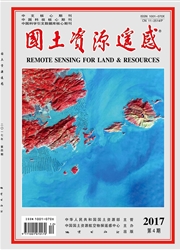

 中文摘要:
中文摘要:
传统的水体信息提取主要利用水体反射与吸收光谱特征构建各种光谱指数模型,进行全局像元级的提取。然而,不同水体类型的光谱、空间形态与空间分布特征均有显著差异。对于山区图像而言,山体阴影、冰雪、裸岩等地物的干扰使全局性水体光谱指数模型难以取得很好的提取精度。面向对象的图像分析方法通过对遥感图像进行分割,从全域—局部上耦合分析水体的光谱、空间形态、空间分布与空间关系等特征,构建了通用性强的湖泊信息提取规则集,最终实现湖泊水体信息的自动化提取。通过eCognition软件对LandsatTM图像的实验结果表明,该方法可以完全避免像元级阈值水体信息提取中出现的一些错误的“零星水体”,自动且高效地提取出了山区湖泊水体信息,在无云情况下提取精度达95%以上。
 英文摘要:
英文摘要:
Traditional water -body information extraction is mainly based on the reflection and absorption spectral characteristics of the water body. By building and using all kinds of spectral index models which respond to the water spectral characteristics more obviously, the water body could be extracted in pixel -level. However, different types of water bodies have significantly different spectral and spatial patterns as well as spatial distributions. As for the mountain area image, the shadows of such objects as the mountain, snow, ice and bare rock make these global water spectral index models fail to get a satisfactory result. The object -oriented image analysis carries out remote sensing image segmentation first, and then analyzes the global and local characteristics of the water in such aspects as spectral and spatial patterns, spatial distribution, and spatial relationships so as to build the water extraction decision ruleset; finally, the water body information is extracted with the ruleset automatically. The Landsat TM image water extraction experiment in the eCognition software shows that the method can completely avoid the emergence of some errors of "sporadic water body" which often exist in the pixel - level threshold value extraction, and the mountain area lakes could be extracted automatically and efficiently, with the accuracy up to 95 % or even higher in the cloud- free case.
 同期刊论文项目
同期刊论文项目
 同项目期刊论文
同项目期刊论文
 An automated scheme for glacial lake dynamics mapping using Landsat imagery and digital elevation mo
An automated scheme for glacial lake dynamics mapping using Landsat imagery and digital elevation mo 期刊信息
期刊信息
